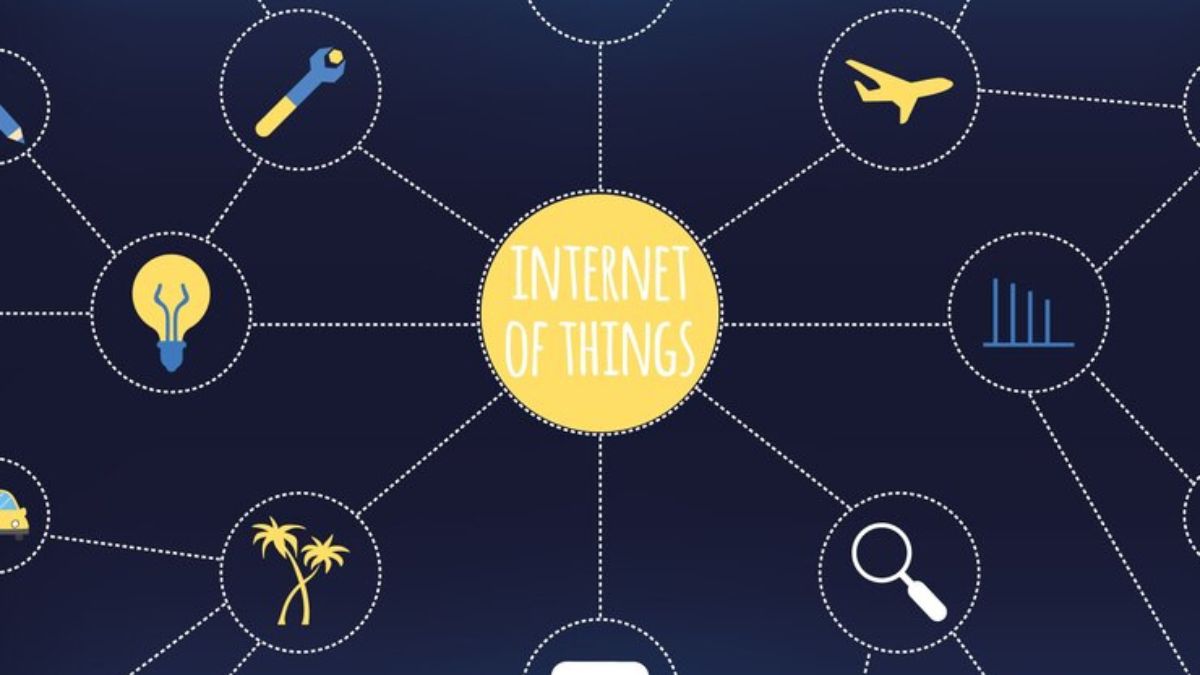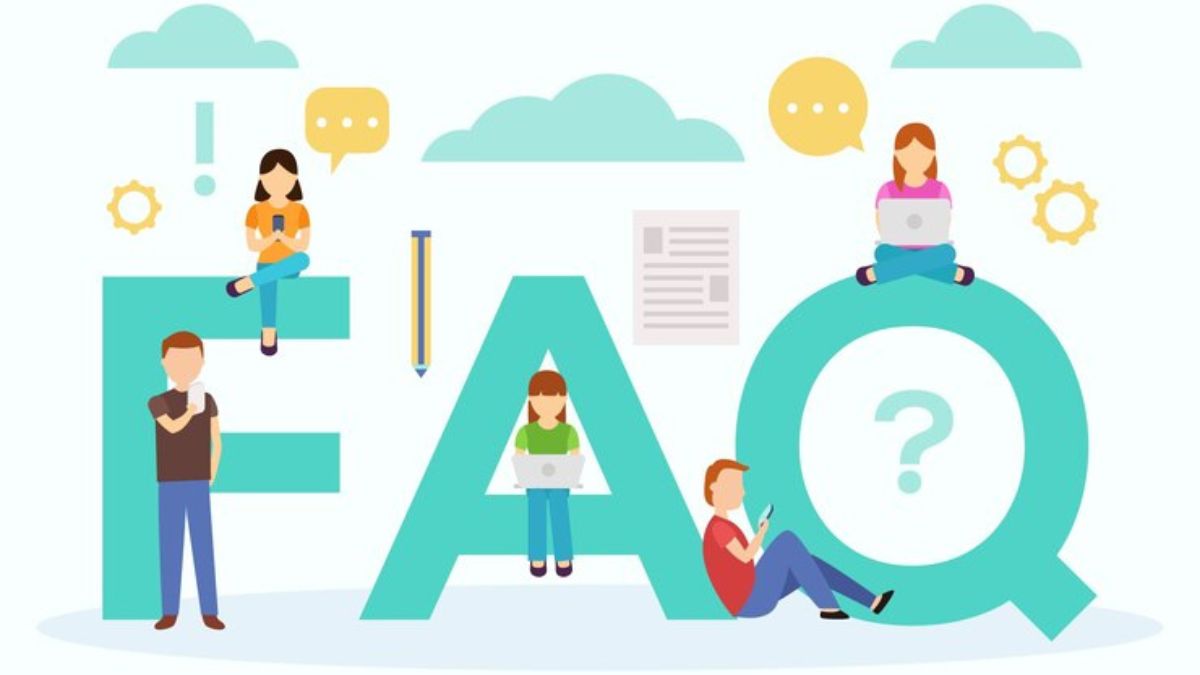TECHNOLOGY
The Journey of Transal and Its Impact on Modern Communication

In our increasingly globalized world, communication across different languages is no longer a luxury but a necessity. Enter Transal, a revolutionary concept that has transformed how we share ideas and information across linguistic borders. But what exactly is Transal, and why is it so crucial today?
In this blog post, we’ll explore the concept of Transal, its origins, and its profound impact on modern communication. Whether you’re a student, a professional, or just someone curious about language and technology, this guide will shed light on how Transal is bridging communication gaps and paving the way for a more connected world.
Understanding Transal
Before we dive into its applications, let’s first understand what Transal actually is. At its core, Transal refers to the process of translating one language into another using advanced technology. Unlike traditional translation methods, which rely heavily on human translators, Transal leverages artificial intelligence and machine learning to make the process faster and more accurate.
The significance of Transal lies in its ability to process large volumes of text quickly, allowing for real-time translation that would be impossible to achieve with human effort alone. This makes it especially useful in today’s fast-paced world, where timely communication is key.
The Origins of Transal Technology
The concept of automated translation isn’t new. In fact, it dates back to the 1950s when the first attempts were made to use computers for language translation. However, early efforts were limited by the technology of the time and couldn’t achieve the accuracy and speed required for practical use.
It wasn’t until the development of sophisticated algorithms and the advent of big data that Transal began to show its true potential. With the ability to analyze vast amounts of linguistic data, these algorithms can now understand context, semantics, and even cultural nuances, making translations more natural and coherent.
Key Components of Transal Systems
Transal systems comprise several key components that work together to deliver accurate translations. One of the primary elements is the language model, a complex system that predicts the likelihood of a sequence of words. This model is trained on vast datasets, enabling it to understand the structure and grammar of different languages.
Another crucial component is the neural network, which mimics the human brain by learning patterns and making predictions based on input data. This allows the system to handle ambiguities and variations in language, improving the overall quality of translations.
Lexical databases also play a vital role in Transal systems, providing detailed information about words and their meanings. These databases are continually updated to reflect changes in language use, ensuring that translations remain relevant and accurate.
Benefits of Using Transal in Communication
The benefits of using Transal in communication are numerous and far-reaching. For starters, it significantly reduces the time and cost associated with traditional translation methods. Businesses can now communicate with international clients and partners more efficiently, breaking down language barriers that previously hindered collaboration.
Transal also promotes inclusivity by providing access to information in multiple languages. This is particularly important for educational institutions, where students from diverse linguistic backgrounds can benefit from translated materials.
Additionally, Transal enhances accessibility for people with disabilities, such as those who are deaf or hard of hearing. By converting spoken language into text, these individuals can participate more fully in conversations and events.
Transal in Business and Commerce
In the realm of business and commerce, Transal has become an indispensable tool for companies looking to expand their reach. E-commerce platforms, for example, use Transal to translate product descriptions and customer reviews, making it easier for consumers worldwide to shop online.
Customer support services have also benefitted from Transal, enabling companies to offer assistance in multiple languages. This not only improves customer satisfaction but also helps businesses build a loyal customer base in different regions.
Furthermore, Transal facilitates international marketing campaigns by translating promotional content into the target audience’s language. This ensures that messages resonate with local cultures, increasing the effectiveness of marketing efforts.
Transal in Education
Education is another field where Transal has made significant strides. Language barriers have long been a challenge for students studying abroad or attending international schools. With Transal, educational institutions can offer learning materials in various languages, making education more accessible to students worldwide.
Online courses and e-learning platforms also benefit from Transal, providing subtitles and translations for video content. This allows students from different linguistic backgrounds to engage with course material and collaborate with peers more effectively.
Transal also supports language learning by providing learners with instant translations and pronunciation guides. This helps students practice and improve their language skills in real-world contexts.
Transal in Media and Entertainment
The media and entertainment industry has embraced Transal to reach a global audience. Streaming services, for instance, use Transal to provide subtitles and dubbing for movies and TV shows, catering to viewers in different countries.
News organizations also rely on Transal to deliver timely and accurate reports to international audiences. By translating articles and broadcasts, media outlets can reach a wider readership and keep people informed about global events.
In the world of gaming, Transal enables developers to localize their games, making them accessible to players from various regions. This not only expands the game’s reach but also enhances the user experience by providing culturally relevant content.
Challenges Facing Transal Technology
Despite its many advantages, Transal technology is not without its challenges. One of the primary issues is accuracy, particularly when dealing with complex languages or specialized terminology. While Transal systems have improved significantly, they can still struggle with idiomatic expressions or context-specific meanings.
Another challenge is maintaining the cultural nuances that are often lost in translation. Language is deeply tied to culture, and certain phrases or concepts may not have direct equivalents in other languages. Transal systems must strive to preserve these nuances to avoid miscommunication or misunderstanding.
There are also ethical considerations surrounding the use of Transal, such as data privacy and bias in language models. Developers must ensure that their systems respect user privacy and do not perpetuate harmful stereotypes or biases.
The Future of Transal
As technology continues to evolve, the future of Transal looks promising. Advances in artificial intelligence and machine learning are set to further enhance the capabilities of Transal systems, making them more accurate and versatile.
The integration of voice recognition technology with Transal will enable real-time interpretation, facilitating smooth communication during meetings, conferences, and even casual conversations. This would be particularly beneficial for international business dealings and diplomatic negotiations.
Transal is also expected to become more personalized, with systems learning individual preferences and adapting translations accordingly. This would create a more tailored and user-friendly experience, catering to the specific needs of each user.
How to Get Started with Transal
If you’re interested in leveraging Transal for your personal or professional needs, there are several ways to get started. Many popular platforms and applications already offer built-in Transal features, such as Google Translate and Microsoft Translator. These tools are user-friendly and accessible, making them a great starting point for beginners.
Businesses looking to integrate Transal into their operations can explore enterprise-level solutions that offer customization and advanced features. It’s important to assess your organization’s specific needs and choose a provider that aligns with your goals.
For developers interested in building their own Transal systems, there are numerous resources and open-source libraries available. These can help you experiment with different algorithms and models, allowing you to create a solution tailored to your unique requirements.
Real-World Examples of Transal in Action
Numerous organizations are already reaping the benefits of Transal technology. For example, tech giants like Facebook and Twitter use Transal to translate user-generated content, fostering communication and connection among users worldwide.
Airbnb utilizes Transal to provide multilingual support for hosts and guests, enhancing the overall experience and ensuring clear communication. This has helped the platform build trust and facilitate seamless transactions between users.
In the healthcare sector, Transal is used to translate medical documents and patient information, improving access to care for non-native speakers. This is particularly valuable in multicultural communities where language barriers can impact patient outcomes.
Conclusion and Next Steps
Transal has undeniably transformed the landscape of modern communication, breaking down language barriers and connecting people from diverse backgrounds. Its applications span various industries, from business and education to media and healthcare, demonstrating its versatility and potential.
For those looking to explore the world of Transal, the opportunities are vast. Whether you’re a business professional seeking to enhance global communication or an individual eager to learn new languages, Transal offers a powerful solution.
To further explore the possibilities of Transal, consider signing up for a course or workshop on language technology. Additionally, stay informed about the latest developments in AI and machine learning, as these technologies will continue to shape the future of Transal.
TECHNOLOGY
Everything You Need to Know About Uhmegle

Have you heard about Uhmegle? This fascinating platform is making waves in the digital world, offering a fresh and exciting way to connect with strangers all over the globe. Imagine sparking unexpected conversations, sharing thoughts, and meeting people entirely out of your routine! Whether you’re looking for new friendships, exploring unique perspectives, or just having some casual chats to brighten your day, Uhmegle is the perfect virtual hangout spot.
If you’re curious about what makes Uhmegle so special and how you can make the most of this platform, you’re in the right place! Stick around, and I’ll give you the lowdown—from how it works to handy tips to elevate your experience!
What Is Uhmegle?
Uhmegle is an online platform that connects users randomly via text or video chat. Think of it as an adventure in social exploration! With just one click, you’re paired with someone from anywhere in the world, and your conversation could go in any direction, from casual chats to thought-provoking debates.
The beauty of Uhmegle lies in its spontaneity and accessibility. There’s no need to create an account or fill out a lengthy form. Simply log in, hit “start,” and voilà—you’re instantly immersed in an interactive space full of possibilities!
It’s free to use, and you can chat anonymously, which is a fun twist for those looking to connect without sharing all their personal details upfront. But don’t worry—there are tools and safety features in place to ensure that your time on Uhmegle remains enjoyable and secure.
Why Uhmegle Stands Out
Curious about what sets Uhmegle apart from other social platforms? Here are some reasons why people can’t stop raving about it!
1. Genuine Spontaneity
There’s a thrill in not knowing who you’ll meet next. Will it be a traveler from Japan, an artist from Italy, or someone navigating the same career challenges as you? Every click opens the door to a new story, new ideas, and a fresh perspective.
2. A Global Audience
Uhmegle connects people from across borders, giving you the chance to interact with other cultures, languages, and lifestyles. It’s like having the entire world at your fingertips—literally.
3. User-Friendly Design
It couldn’t be easier to use! No confusing layouts or overwhelming options. The simplistic interface lets you focus on what really matters—connecting with people.
4. A Break from Social Media Drama
Unlike traditional social media, where likes, shares, and comments can dominate the experience, Uhmegle is free of that noise. It’s just about chatting, connecting, and being authentic.
5. Private, Fun, and Dynamic
With optional anonymity and tools like filters to refine who you chat with (think specific interests), Uhmegle adds a layer of personalization while maintaining a casual, fun atmosphere.
How to Use Uhmegle Like a Pro
If you’re ready to give Uhmegle a spin, here are some quick steps to get you started, plus tips to make it a memorable experience!
Step 1: Visit the Platform
Simply head to the Uhmegle website. There’s no need to download anything!
Step 2: Pick Your Chat Preferences
Choose whether you want to chat via text or video. Both options have their charm—texting is low-key and discreet, while video chat lets you see the person behind the screen, making interactions even more dynamic.
Step 3: Hit Start
Click “Start,” and you’re instantly paired with a random individual. It’s that simple!
Step 4: Engage with Curiosity
Start the conversation with an open mind. You never know what you might learn or who you might meet! Pro tip? Begin with a fun icebreaker, like “What’s the most unexpected thing you’ve done this week?”
Step 5: Stay Respectful and Safe
Use Uhmegle’s built-in tools—like the “Stop” button or reporting options—to keep the experience positive. Respect boundaries, and if a conversation isn’t vibing, feel free to move along. There’s always a new connection waiting!
Bonus Tip!
Make use of Uhmegle’s interest filters. Want to find someone who shares your passion for cinema or game design? Add those as your interests and get matched with like-minded individuals in a snap!
Who Should Try Uhmegle?
Uhmegle is perfect for anyone who loves discovering new things about the world or simply enjoys a good conversation. Are you a student looking to practice a new language? Jump on Uhmegle. An introvert wanting to find meaningful interactions without leaving your comfort zone? Uhmegle’s got you covered.
Even busy professionals can use Uhmegle as a quick mental escape during their day. It’s versatile, exciting, and, best of all, entirely inclusive.
Safety Tips for Enjoying Uhmegle
While Uhmegle aims to make connections fun and safe, here are a few measures to keep in mind while you explore the platform.
- Stay Anonymous: Avoid sharing personal details like your full name, address, or phone number. Keep your privacy intact!
- Use the Tools Provided: If a conversation gets uncomfortable, make use of the “Stop” button to leave the chat or block/report inappropriate behavior.
- Be Respectful: Remember, the other person is also there for a positive experience. Treat them with kindness and respect.
- Supervise Younger Users: If teens or minors in your household are interested in using the platform, ensure supervised usage to maintain a safe online environment.
Why You Should Give Uhmegle a Try
If you’ve been feeling disconnected lately or simply want to add a spark of adventure to your day, Uhmegle could be the solution. Without any commitments or complicated sign-ups, it’s an easy, fun way to expand your horizons and make meaningful connections.
Every chat has the potential to surprise you—whether you gain a new friend, a fresh perspective, or even an unexpected laugh! Why wait? Click, connect, and start exploring the world one conversation at a time.
TECHNOLOGY
TekGPS Login Guide, Everything You Need to Know

Efficient GPS tracking is essential for businesses and individuals looking to monitor vehicles, assets, or personnel. TekGPS Login is a reliable platform that provides a powerful suite of GPS tracking solutions, enabling users to manage their tracking needs effectively. If you’re facing challenges or need clear guidance on how to log in and access your TekGPS account, this blog is for you.
We’ll cover the essential steps to successfully log in to TekGPS, address common troubleshooting issues, and discuss tips for secure account management.
What is TekGPS?
TekGPS is an advanced GPS tracking service that provides businesses and individuals with tools to monitor their assets in real-time. The platform caters to fleet managers, logistics companies, and individuals who require precise location tracking. TekGPS offers features such as:
- Real-time GPS tracking for vehicles, equipment, or personnel
- Detailed reporting on routes, stops, and activity history
- Alerts and notifications for critical events (e.g., unauthorized movement or idling)
- User-friendly interface for managing multiple devices or fleet systems
Before you can take full advantage of TekGPS’s features, you’ll need to successfully access your account through the login process.
How to Access Your TekGPS Account
Step 1: Navigate to the TekGPS Login Page
- Open your preferred web browser (e.g., Chrome, Firefox, Safari).
- Visit the official TekGPS login page. This is typically available at www.tekgps.com/login (make sure the link is secure, indicated by “https://”).
- Bookmark the login page for easier access in the future.
Step 2: Enter Your Credentials
- On the login page, locate the fields for your username and password.
- Enter the email address or username associated with your TekGPS account in the appropriate field.
- Input your password carefully. Passwords are case-sensitive, so ensure that “Caps Lock” is not turned on.
Step 3: Click “Log in”
- Once your login credentials are entered, click the “Log in” button.
- If everything is correct, you’ll be redirected to the TekGPS dashboard, where you can access tracking data and other features.
Troubleshooting TekGPS Login Issues
If you encounter challenges while logging in, here’s how to resolve common problems quickly.
Forgotten Password
- Click the “Forgot Password?” link on the login page.
- Enter your registered email address to receive a password reset link.
- Check your inbox (and spam folder), follow the instructions in the reset email, and create a new password.
- Return to the login page and use the new password to access your account.
Account Locked
- If your account is locked due to multiple failed login attempts, wait a few minutes and try again later.
- Alternatively, contact the TekGPS support team to unlock your account.
Incorrect Credentials
- Double-check your username/email and password for typos.
- Update saved passwords in your browser or password manager if they are outdated.
Browser Compatibility Issues
- Ensure that you’re using an updated version of your web browser.
- Clear your browser’s cache and cookies before logging in again.
Tips for Secure Account Use
Keeping your TekGPS account safe is critical to protecting your assets and sensitive tracking data. Follow these tips to improve account security.
1. Use a Strong Password
- Create a password that includes a combination of uppercase and lowercase letters, numbers, and special characters.
- Avoid using easily guessed information like birthdays or common words.
2. Enable Two-Factor Authentication (2FA)
- If TekGPS supports 2FA, enable this feature to add an extra layer of security. You’ll be required to enter a verification code sent to your phone or email.
3. Log Out After Each Session
- Always log out of your account when using a shared or public device to prevent unauthorized access.
4. Regularly Monitor Activity
- Review your account’s activity logs and GPS tracking reports to ensure there are no unauthorized changes.
Optimizing Your TekGPS Experience
Once logged in, take advantage of TekGPS’s full range of features to maximize efficiency.
Explore Your Dashboard
The TekGPS dashboard offers a bird’s-eye view of all your assets and their statuses. Familiarize yourself with the interface to manage your devices effectively.
Set Up Alerts and Geofencing
Enable notifications for specific events, like when a vehicle leaves a designated area. Geofencing features can enhance security and operational awareness.
Analyze Reports
TekGPS provides detailed reports on movement, stops, and fuel usage. Use these insights to improve fleet efficiency and reduce costs.
Final Thoughts
TekGPS is your partner in advanced GPS tracking, offering powerful tools to simplify asset monitoring and fleet management. By following the steps outlined in this guide, you can easily log in to your TekGPS account and tackle any issues that come your way.
Got questions about your tracking setup? Visit the TekGPS support page for detailed FAQs or contact their customer service.
TECHNOLOGY
What is 70537865 Allis? Understanding Its Significance

Introduction
Numbers can be cryptic, but some carry specific and meaningful designations. One such number is 70537865 Allis, which might pique curiosity for those coming across it. What does it signify? Is it related to technology, machinery, or a cataloged product? This blog post unpacks what 70537865 Allis represents, its context, and its importance. Whether you’re a professional searching for clarity or a curious reader wanting precise information, this guide is here to simplify your understanding.
A Deep-Dive Into 70537865 Allis
What Does “70537865 Allis” Refer To?
At its core, 70537865 Allis is recognized as a part number associated with Allis-Chalmers Corporation, a company historically known for manufacturing industrial equipment such as tractors, engines, construction tools, and power systems. This specific designation refers to a machine part, typically cataloged to streamline ordering, repairs, or replacement processes.
Quick facts about Allis-Chalmers:
- Founded in 1901, Allis-Chalmers became a global leader in machinery manufacturing.
- The company has roots in agriculture, mining, and power generation industries.
- While it ceased as an independent entity in 1999, its equipment and parts remain widely utilized and supported.
Why Are Part Numbers Important?
Part numbers like 70537865 Allis ensure smooth operations for various industries by helping:
- Identify specific components for equipment maintenance.
- Standardize inventory records, avoiding confusion with similar parts.
- Simplify communication between manufacturers, distributors, and end-users.
For businesses and repair professionals, a precise part number is critical to ensuring compatibility, quality, and operational efficiency when dealing with intricate machinery.
The Applications of 70537865 Allis
1. Equipment Repairs and Maintenance
Machinery in agriculture or construction is subject to wear and tear. A part number like 70537865 Allis could play a key role in:
- Replacing worn-out components: Ensuring machines continue to function efficiently.
- Streamlining repairs: Helping technicians locate the correct replacement quickly.
2. Machinery Upgrades
Older Allis-Chalmers equipment often requires augmentation to match modern standards. Knowing the right part number simplifies upgrades while ensuring historical machines maintain their operational legacy.
3. Understanding Legacy Equipment
For those researching or working with legacy machinery, having specific identifiers like 70537865 Allis can:
- Provide historical insights into machine models.
- Support equipment documentation and archival efforts.
Where to Find 70537865 Allis Parts?
Primary Sources:
- OEM Support Channels:
Though Allis-Chalmers no longer operates independently, many companies still supply its parts. AGCO Corporation, a prominent agricultural manufacturer, is often referenced for Allis-Chalmers product support.
- Distributors and Dealers:
Numerous third-party vendors specialize in legacy equipment and can provide part numbers like 70537865. Examples include:
- Industrial and agricultural equipment retailers.
- Specialized online platforms for obsolete or hard-to-find parts.
Secondary Markets:
- Used Parts Dealers:
Companies dealing in recycled or refurbished Allis-Chalmers parts often hold uncommon numbers like 70537865.
- Online Marketplaces:
Platforms like eBay, Craigslist, or machinery-focused e-commerce websites sometimes stock rare parts for niche buyers.
Tips for Searching and Ordering
- Verify the Part Number:
Double-check the part number (70537865) before purchasing to ensure compatibility with your equipment.
- Look for Manufacturer Documentation:
Check maintenance and operation manuals to confirm the need for this specific part.
- Choose Reputable Vendors:
It’s crucial to work with sellers who guarantee the authenticity and quality of legacy parts.
How to Maintain Equipment Using 70537865 Allis
Once you’ve acquired parts like 70537865 Allis, proper application and maintenance help extend their lifespan. Here’s how:
- Follow Manufacturer Guidelines:
Install parts per the machine’s operation manual to avoid misuse.
- Schedule Regular Inspections:
Routine checks can preemptively detect wear and address issues early.
- Use Compatible Tools:
Always use tools designed for the specific machinery to ensure proper handling.
What Makes Allis-Chalmers Relevant Today?
While Allis-Chalmers ceased operations over two decades ago, its machines and parts, such as 70537865 Allis, continue to impact industrial, construction, and agricultural functions. Their durability and reliability have made them treasured by enthusiasts and professionals alike. The simplicity provided by original part numbers remains a testament to the company’s legacy of precision and customer-focused engineering.
Final Thoughts – Navigating Legacy Machinery with Confidence
The significance of 70537865 Allis lies not just in its part number but in its role in preserving operations for Allis-Chalmers machinery. Whether in a field, construction site, or archive, understanding these numbers helps unlock the full potential and historical value of equipment.
For those who rely on such parts, take the first step to optimize your machinery today by partnering with reputable suppliers and adhering to industry-maintained best practices.
-

 TECHNOLOGY5 months ago
TECHNOLOGY5 months agoRevo Technologies in Murray Utah Leading the Charge in Tech Innovation
-

 NEWS4 months ago
NEWS4 months agoKuttymovies7: Everything You Need to Know
-

 CRYPTO5 months ago
CRYPTO5 months agoCrypto Goldmine Exploring FintechZoom’s Top Picks
-

 NEWS4 months ago
NEWS4 months agoShari Ann Chinnis Indianapolis: A Profile in Passion and Dedication
-

 TECHNOLOGY5 months ago
TECHNOLOGY5 months agoRiding the Waves of Innovation Deep Offshore Technology’s Impact on Ocean Exploration
-

 EDUCATION5 months ago
EDUCATION5 months agoThe Future of Learning with Educational Assistants
-

 NEWS5 months ago
NEWS5 months agoThe Secret World of CFBWH and Why It’s Taking Over
-

 CRYPTO5 months ago
CRYPTO5 months agoExploring the World of Cryptocurrency with NewZnav
